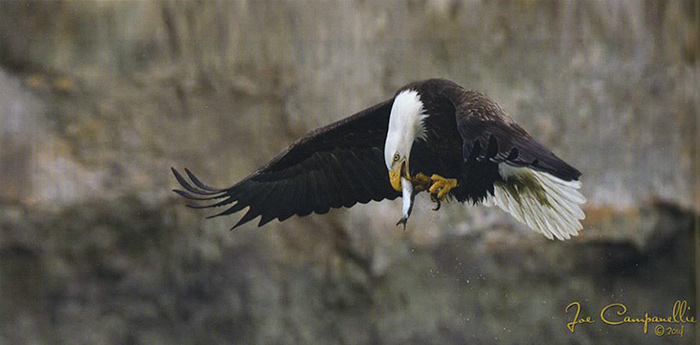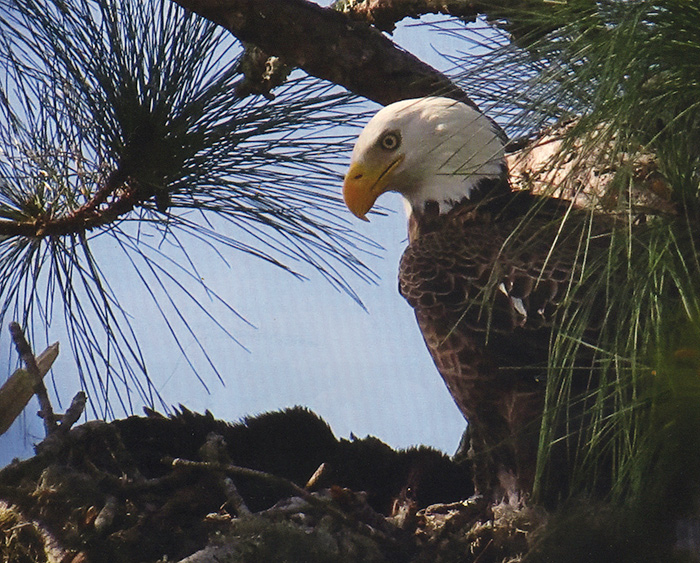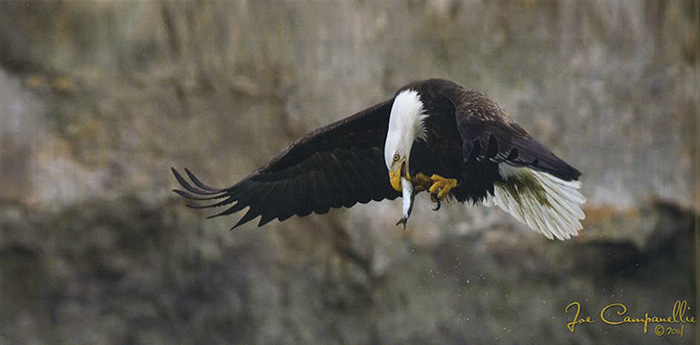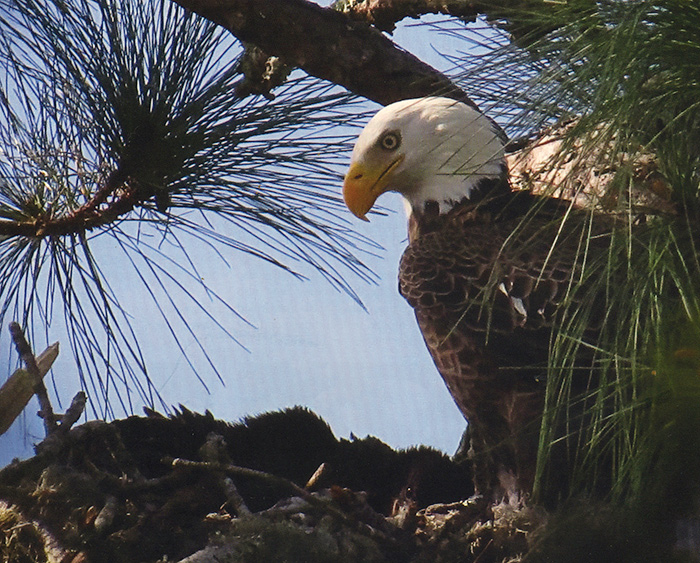America’s Bird – the Bald Eagle
 Photo Credit – Joe Campanellie
Photo Credit – Joe Campanellie
The Bald Eagle, the national symbol of the United States, is unique to North America. The Bald Eagle’s scientific name, Haliaeetus leucocephalus, means sea (hali), eagle (aeetos), white (leukos), and head (cephalos) as in the feathers on the eagle’s head. The word “bald” comes from the old English “balde,” meaning white. The Bald Eagle is a seabird with a white head.
In Florida, the Bald Eagle can be found along the Atlantic and Gulf coasts and around inland river systems, with nests usually within a mile or two of the water. There are several eagle nests in Flagler County and eagles can often be seen soaring near the ocean.
Nesting season in Florida is from October to April, with nests often being built high in a living pine or cypress tree that offers a view of the surrounding area and can support the eagle’s sizeable nest. Other nesting sites may include former great blue heron nests or artificial structures, such as communication towers and raptor nesting platforms built by communities or bird enthusiasts. According to an unpublished Flirida Fish and Wildlife Conservation Commission (FWC) report in 2006, however, Bald Eagles in Florida strongly prefer living native pines, with 75 percent of all eagle nests surveyed being built in these trees.
Most nests produce 1-2 nestling eagles, which remain with the parents for about 13 weeks while they are fed and practice their flying skills (their first flight is called “fledging”), after which they spend another 4-11 weeks before leaving the nest in April. Using one of three migration flyways—the Atlantic Coast, the Appalachian Mountains, and Mississippi River Valley—fledglings and adults from our area often migrate northward to the coastal region of North Carolina, the Chesapeake Bay, and as far north as Newfoundland and Canada, where they spend the summer before returning to Florida in the fall.
Florida Bald Eagles are opportunistic foragers, feeding or scavenging on a wide variety of prey, primarily various fish and waterfowl species, plus occasional mammals, amphibians, and reptiles. Bald Eagles in Florida also often scavenge carcasses along roadways and even garbage at landfills.
Florida has 1,340 nesting territories (based on 2008-2009 nesting season data) and is home to more nesting pairs than any other state, except Alaska and Minnesota. Although removed from federal and state endangered species lists in 2007 and 2008, respectively, federal and state rules continue to protect the species from human threat.
For those wanting to view Florida Bald Eagles on video, this website by the American Eagle Foundation will allow you to enjoy these beautiful creatures in their natural habitat. I hope you enjoy them as much as I do.

Photo Credit – Ed Siarkowitz
Article written by Frank Gromling, and appeared in the January – February – March 2016 Sun and Surf magazine.



